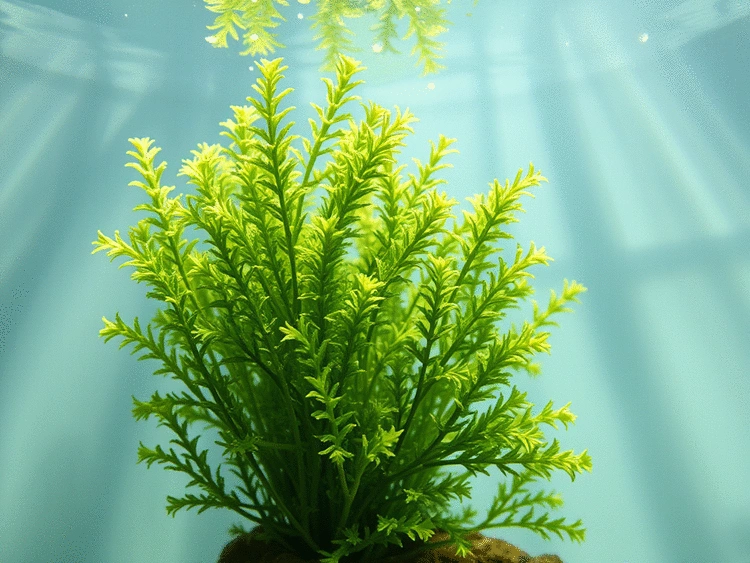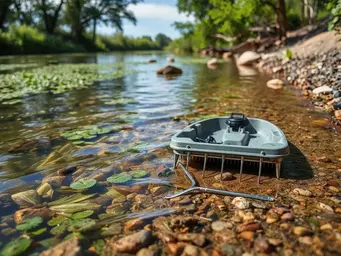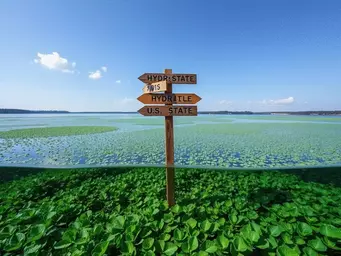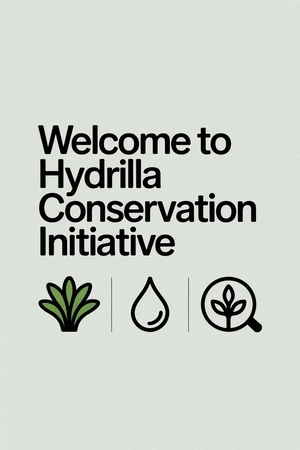As we delve into the world of hydrilla, consider this: a single plant has the potential to transform entire aquatic ecosystems. Understanding its multifaceted role is essential for effective management. What lessons can we learn from this invasive species?
What You Will Learn
- Hydrilla is an invasive aquatic plant that can grow up to a foot per day, rapidly altering local ecosystems.
- While it offers some habitat benefits, its overgrowth can disrupt native species and degrade water quality.
- Effective management of hydrilla requires a combination of chemical, biological, and physical control methods.
- Community involvement is crucial; educating yourself and participating in local initiatives can help combat hydrilla's spread.
Hydrilla's Dual Role: Challenges vs. Benefits
This visual highlights the dichotomous impact of Hydrilla verticillata on aquatic ecosystems, comparing its detrimental effects with its surprisingly beneficial aspects.
Challenges & Negative Impacts
- ×Competition: Chokes out native aquatic plants, leading to biodiversity loss.
- ×Water Quality: Dense mats cause oxygen depletion, harming aquatic life.
- ×Economic: Disrupts fishing, boating, and recreational activities.
Benefits & Opportunities
- ✓Habitat: Provides shelter and breeding grounds for some aquatic species.
- ✓Water Quality: Can oxygenate water in moderate densities.
- ✓Food Source: Serves as a food source for some herbivorous fish.
Understanding the Basics of Hydrilla and Its Importance
In the murky depths of our waterways lies a plant that poses both challenges and opportunities: hydrilla. Officially known as Hydrilla verticillata, this invasive aquatic species has become a significant concern for ecologists and conservationists alike. But what exactly is hydrilla, and why should we care about it?
As an aquatic biologist with over a decade of experience, I can tell you that hydrilla is more than just a plant; it's a complex organism with unique characteristics that allow it to thrive in various aquatic environments. Understanding hydrilla is crucial for effectively managing its impact on our ecosystems.
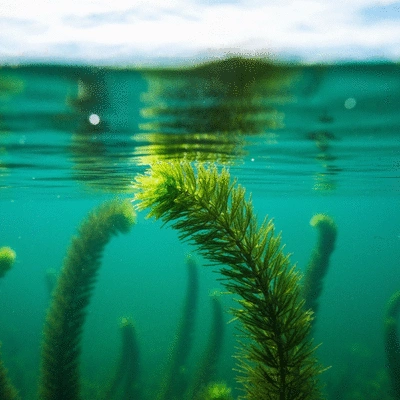
What is Hydrilla? An Overview of Hydrilla verticillata
Hydrilla is a submerged aquatic plant native to Africa, Asia, and Europe, but it has spread to many parts of the world, including North America. It is known for its rapid growth, often creating dense mats that can completely cover the water's surface. These mats not only block sunlight but also disrupt the natural balance of aquatic life. For more detailed information on its characteristics and distribution, you can refer to the USGS Nonindigenous Aquatic Species database.
- Origin: Native to regions in Africa and Asia.
- Growth Rate: Capable of growing up to a foot per day under optimal conditions.
- Reproductive Methods: Can reproduce through fragmentation, tubers, and seeds, making control efforts challenging.
This plant thrives in warm, nutrient-rich waters, making it particularly problematic in lakes and ponds that receive runoff from agriculture or urban areas.
The Role of Hydrilla in Aquatic Ecosystems
While hydrilla is often seen as a villain in our waterways, it does have a role to play in aquatic ecosystems. It's essential to recognize both the positive and negative aspects of this plant. For instance, hydrilla can provide habitat for fish and invertebrates, which may be beneficial in certain contexts.
- Habitat Benefits: Provides shelter and breeding grounds for some aquatic species.
- Water Quality: Can help oxygenate the water in high densities.
- Food Source: Serves as a food source for herbivorous fish.
However, these benefits can quickly turn into disadvantages when hydrilla overwhelms native species, highlighting the fine balance we must maintain in our conservation efforts.
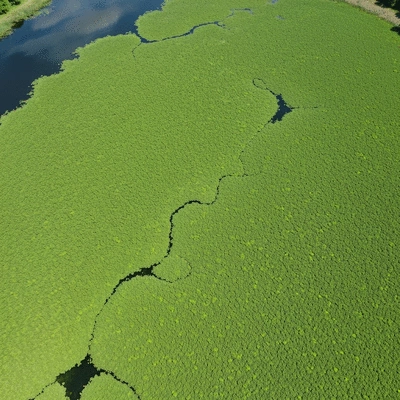
Hydrilla's Impact on Freshwater Ecosystems and Biodiversity
The impact of hydrilla on freshwater ecosystems cannot be understated. As it proliferates, it can outcompete native plants for sunlight and nutrients, leading to significant biodiversity loss. This shift can alter food chains, affecting everything from fish populations to water quality. The Invasive Species Info website offers further insights into the extensive ecological and economic damages caused by invasive species like hydrilla.
- Competition: Hydrilla's rapid growth can choke out native aquatic plants.
- Water Quality Issues: Dense mats can lead to oxygen depletion, harming fish and other aquatic life.
- Economic Consequences: Invasive hydrilla can affect fishing, boating, and other water-based recreational activities.
As the founder of the Hydrilla Conservation Initiative, I strive to equip you with the knowledge necessary to combat this invasive threat. By understanding hydrilla and its implications, we can work together to protect our vital waterways and restore balance to our ecosystems.
Frequently Asked Questions about Hydrilla
What is hydrilla and where is it from?
Hydrilla (Hydrilla verticillata) is a submerged aquatic plant native to parts of Africa, Asia, and Europe. It has become an invasive species in many other regions, including North America.
How fast does hydrilla grow?
Under optimal conditions, hydrilla can grow incredibly fast, sometimes as much as a foot per day, forming dense mats on the water's surface.
What are the main negative impacts of hydrilla?
Its rapid growth can outcompete native plants, leading to biodiversity loss, cause oxygen depletion in water (harming aquatic life), and disrupt recreational activities like fishing and boating.
Does hydrilla have any benefits?
Yes, in moderate densities, hydrilla can provide habitat and breeding grounds for some aquatic species, oxygenate water, and serve as a food source for certain herbivorous fish. However, these benefits are outweighed by its invasive nature.
How can I help manage hydrilla?
You can help by educating yourself, volunteering for local clean-up and restoration events, and reporting sightings of hydrilla or other invasive plants to local environmental authorities.
Did You Know?
Over 40% of U.S. lakes are affected by invasive species like hydrilla, impacting local ecosystems and economies. Understanding the extent of this issue is vital for effective management and conservation efforts.
Summarizing Key Insights on Hydrilla
As we wrap up our exploration of hydrilla, it’s clear that understanding this plant is crucial. Hydrilla verticillata not only poses a challenge to our aquatic ecosystems but also offers an opportunity for us to learn about the delicate balance of nature. In this summary, let’s revisit the essential points regarding hydrilla's identification, biological traits, and effective management strategies.
Recap of Hydrilla's Identification, Biology, and Management
- Identification: Recognizing hydrilla involves checking for its distinctive whorled leaves, which can vary in number and appearance depending on environmental factors.
- Biology: Hydrilla thrives in various conditions, demonstrating remarkable adaptability, particularly in nutrient-rich environments.
- Management: Effective control methods range from chemical and biological approaches to physical removal, each with its own set of pros and cons. The New York State Department of Environmental Conservation provides valuable resources on managing this invasive plant.
These insights serve as a foundation for understanding how we can collectively manage hydrilla and protect our waterways. Each point highlights the importance of being informed and proactive in our efforts.
Call to Action: Get Involved in Hydrilla Management Efforts
Now that we’ve gained a comprehensive understanding of hydrilla, it’s time to translate this knowledge into action! My passion for environmental conservation drives me to encourage you to take part in local initiatives that aim to combat the spread of invasive species.
How You Can Help Protect Aquatic Ecosystems
- Educate Yourself: Stay informed about hydrilla and its impacts through resources available at the Hydrilla Conservation Initiative.
- Volunteer: Participate in local clean-up and restoration events that focus on removing invasive species from your waterways.
- Report Sightings: If you spot hydrilla or other invasive plants, report them to local environmental authorities to help with early detection and management.
Your involvement can make a significant difference in preserving our aquatic ecosystems! Together, we can safeguard these vital resources for future generations.
Join Local Conservation Groups or Initiatives
Engagement with local conservation groups is another powerful way to contribute. By joining forces with like-minded individuals, you can participate in organized efforts to manage hydrilla and promote ecosystem health. Here are a few benefits of joining these groups:
- Networking: Connect with environmental professionals and fellow enthusiasts who share your passion.
- Learning Opportunities: Gain hands-on experience and knowledge from experts in the field.
- Collective Impact: Work as a team to enact positive changes in your community.
Being part of a conservation initiative not only enriches your understanding of aquatic ecosystems but also empowers you to take meaningful action. Let’s come together to protect our waterways and create a healthier environment!
Recap of Key Points
Here is a quick recap of the important points discussed in the article:
- Identification: Recognize hydrilla by its distinctive whorled leaves, typically in groups of five to seven.
- Biology: Hydrilla thrives in warm, nutrient-rich waters and can grow rapidly, making it a formidable invasive species.
- Management: Effective control methods include chemical, biological, and physical removal, each with its own advantages and disadvantages.
- Ecological Role: While hydrilla provides some habitat and water quality benefits, it can disrupt native ecosystems and biodiversity if left unchecked.
- Community Engagement: Getting involved in local conservation efforts and reporting sightings can help manage and mitigate the impact of hydrilla.
